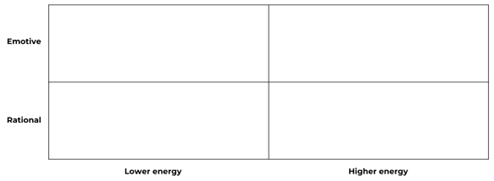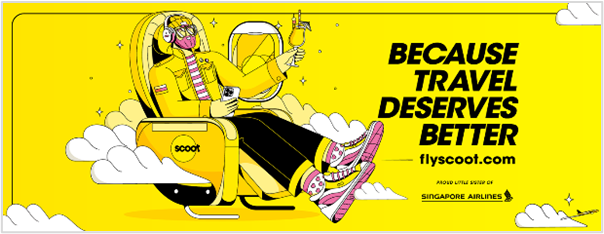Key takeaways:
To mark the skin with fire. Burning is what the core nature of branding is, wrote Bastos and Levy, professors in marketing from the University of Arizona.
You may think - what does that mean and how does this relate to branding my business? The literal idea of branding as a form of burning is especially powerful and has a strong duality to it. Fire is warm and comforting, it cooks food and gives life, but it also can be an agitator, it can create unrest or strife.
Think about the fire within your business. How do you look to create a personal and social identity; do you want to be one with the crowd or stand out? Do you want to comfort or disrupt? A brand strategy always starts with you, and only after you’re clear about your aspirations, should you embark on defining it.
Look in the mirror and let’s explore how to create a branding strategy that is just for you. In this article we will give you clear strategic guidelines to create and build a brand identity that implants your brand in peoples’ minds.
Your Brand Proposition & Ambition
We talked about how branding comes from fire, but fire needs to be used with a clear purpose to achieve a desired outcome. The first step in your branding strategy must be to identify your ambition and proposition. Start by clarifying your brand’s mission, vision, and foundational values. Define what your Unique Selling Point is and collate that into 3-5 core characteristics that will set the basis for your brand.
To identify these core characteristics, investigate the full scope (current and potential) of your business and see where you standout. You can cover four main areas:
Dive in and identify what strong points you can uncover in these areas. For example, Patagonia stands out for their environmental sustainability (green tech and materials upcycling), complimentary services (equipment repair, buy back of used gear), global retail footprint, and systems & technology (state of the art technical outdoor gear development).

In addition to this, conduct thorough market research to understand your target customers. Be brave to fail and keep iterating. Keep creating new brand hypotheses and test them with your prospective clients. This will give you clear insight into where you should (or shouldn’t) advance to.
Define your Brand personality
Now that you have figured your brand’s proposition, ambitions and target customer segment, define the look-and-feel and tone-of-voice you want your brand to exude with your target audience. This is your brand personality.
Your brand personality influences both your visual identity (colours, fonts, graphics, layout, etc.) and verbal identity (vocabulary, messages, etc.). For some of the more creative people, it is not hard to describe their brand’s personality. If you find it difficult, start with our 2x2 brand personality matrix to find a quadrant that works for you and go deeper from there (make sure you don’t stop here!).

Another excellent practice beyond a brand product matrix is to look at your market peers and how they tailor their brand personalities. Think about what touchpoints you want to coincide in and where you want to differ. Trust us: even though your business belongs to a well-established sector, you can still find your own unique personality profile in it. Take an example of corporate branding strategy: Scoot; a brand in the mature airlines industry.
Scoot is a low-budget airline that stands out from other traditional airlines by having a more playful, casual, almost irreverent personality. Unlike its parent brand, Singapore airlines, Scoot, with its vibrant yellow, appeals to a younger market through merchandising that uses slang and laidback illustrations to show their approachability, budget friendly, no-frills services. In this way, it has found a unique standpoint in an industry packed with major players such as Qantas, Qatar Airways, and other low-budget carriers such as AirAsia.

Brand Architecture
Identify what brand architecture adapts better to your brand. This will play a role when you want to branch out, acquire or transition into different products or services. For instance, is there cross-brand synergy to unify your businesses or products & services under a single brand? Then a monolithic approach may be the best answer for you. On the flipside, do your brands target different customers with different brand propositions or personalities that do not cross-reference? Then, a portfolio architecture may be your best fit. To dive deeper into the implications of brand architecture, let’s go back to the Scoot case.
Singapore Airlines is the parent company of Scoot, and so, they have designed a brand architecture that looks to show their differences; the former with a more established, serious and luxurious feel, while the latter is more casual, fun, easy-going feel. It’s clear the different customer segments or flight occasions made the company decide to keep the two brands at an arm’s length even though you might argue that Scoot will benefit from SQ’s halo effect.
Differentiation and Longevity
If you want to create long-term resilience and trust, you have to create customer loyalty across time. Sometimes it may be tempting to focus on competitors to make sure you are better than them. But this is a trap. Do not let your competitors define who you are. Let the customers tell you what they want and offer it in such delightful way that they will never leave your brand.
That’s why you have to be ready to evolve when customer preferences change. As we have mentioned in our previous series on costumer co-creation, specifically in our article “Innovating with Customers: How You Can Unlock Untapped Creativity and Build Brand Loyalty”, constantly engaging and validating your products and brand proposition with customers is crucial to attain longevity and longstanding loyalty. They value it when you build a relationship based on trust and reliance. You can set up 90-day cycles of agile marketing within your annual strategy and have core teams keep the brand steady while dedicated squads respond rapidly to market shifts, but don’t forget to nurture your relationships by fostering validation sprints.
This way, you can adopt and adapt innovations without losing the core values or propositions that made you endearing to customers in the first place.
Embed Strategic Measurement
As the saying goes, what gets measured gets managed. Set strategic plans to help your team go beyond short-term metrics like “likes” and impressions to focus on long-term goals (e.g. brand awareness, net promoter score, loyalty). Create a balanced set of leading and lagging metrics to help you constantly reassess your success. It may all feel like it’s running smoothly, but just like any good working machine, it needs to be monitored, oiled, and maintained frequently.
Conclusion
Sometimes we overlook brand strategies and rush straight to design of our logo, colours, fonts, graphics, etc. We think having a good idea and beautiful designs are enough to keep a business up and running. However, in our information-saturated reality, there is intense competition for customer attention. That’s why branding in a strategic manner, and hiring brand designers, is so important. Only after you have a winning brand strategy can your designs and marketing stand a good chance of standing out to help you gain loyal customers and fans.
Don’t forget what branding means in its essence: fire. It can unify as well as create unrest. It is up to you to identify what is the type of “burn mark” you want to leave with your business, but the stamp must be clear and memorable. It will ensure your company’s survival.
At Binomial Consulting, we help you find what makes your company uniquely you and define your brand’s identity in a way that will allow you to plan, grow and create long-term trust. Trust our brand strategy agency in Singapore. Contact us to find the fire within your business that will drive your brand.